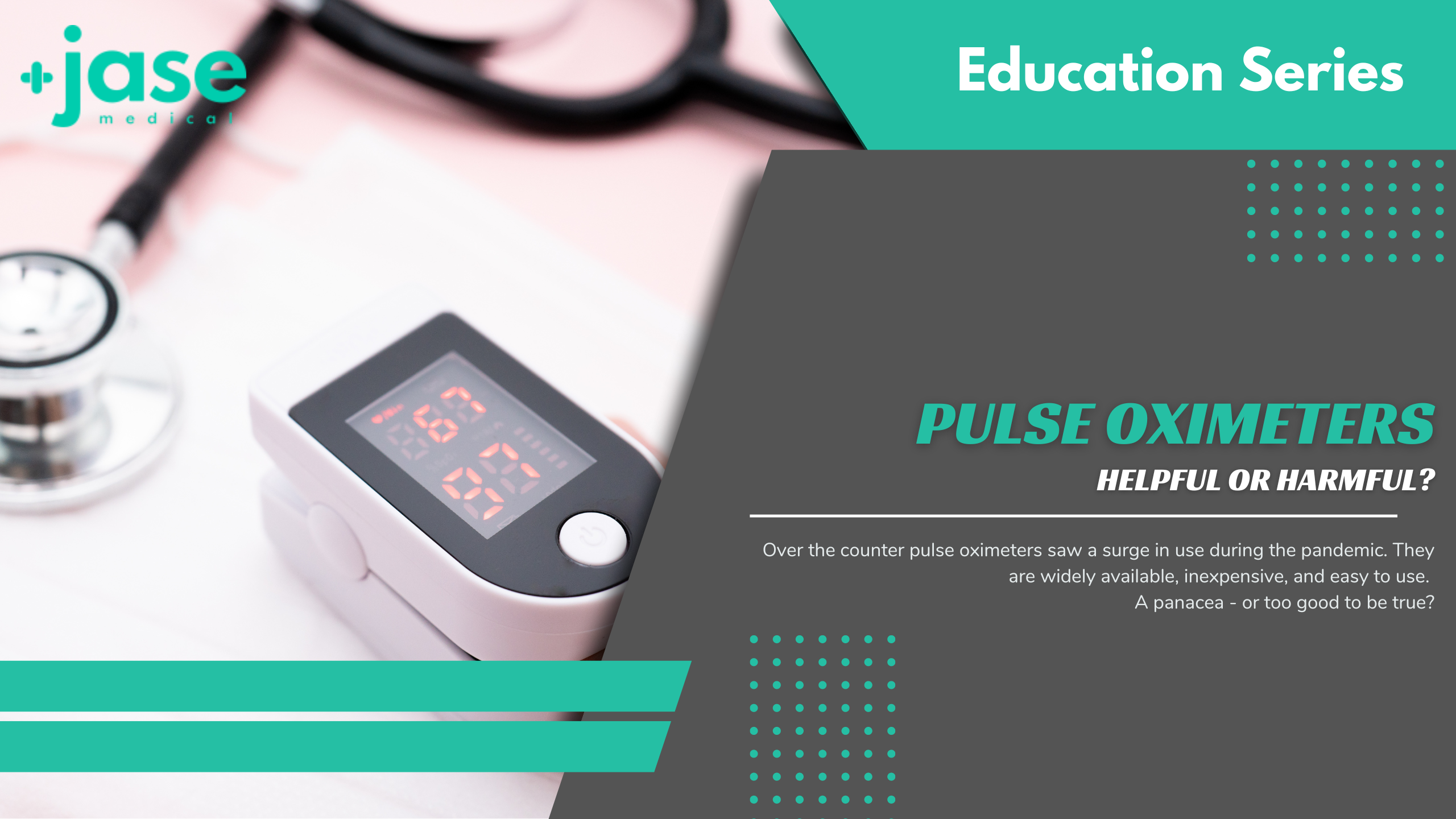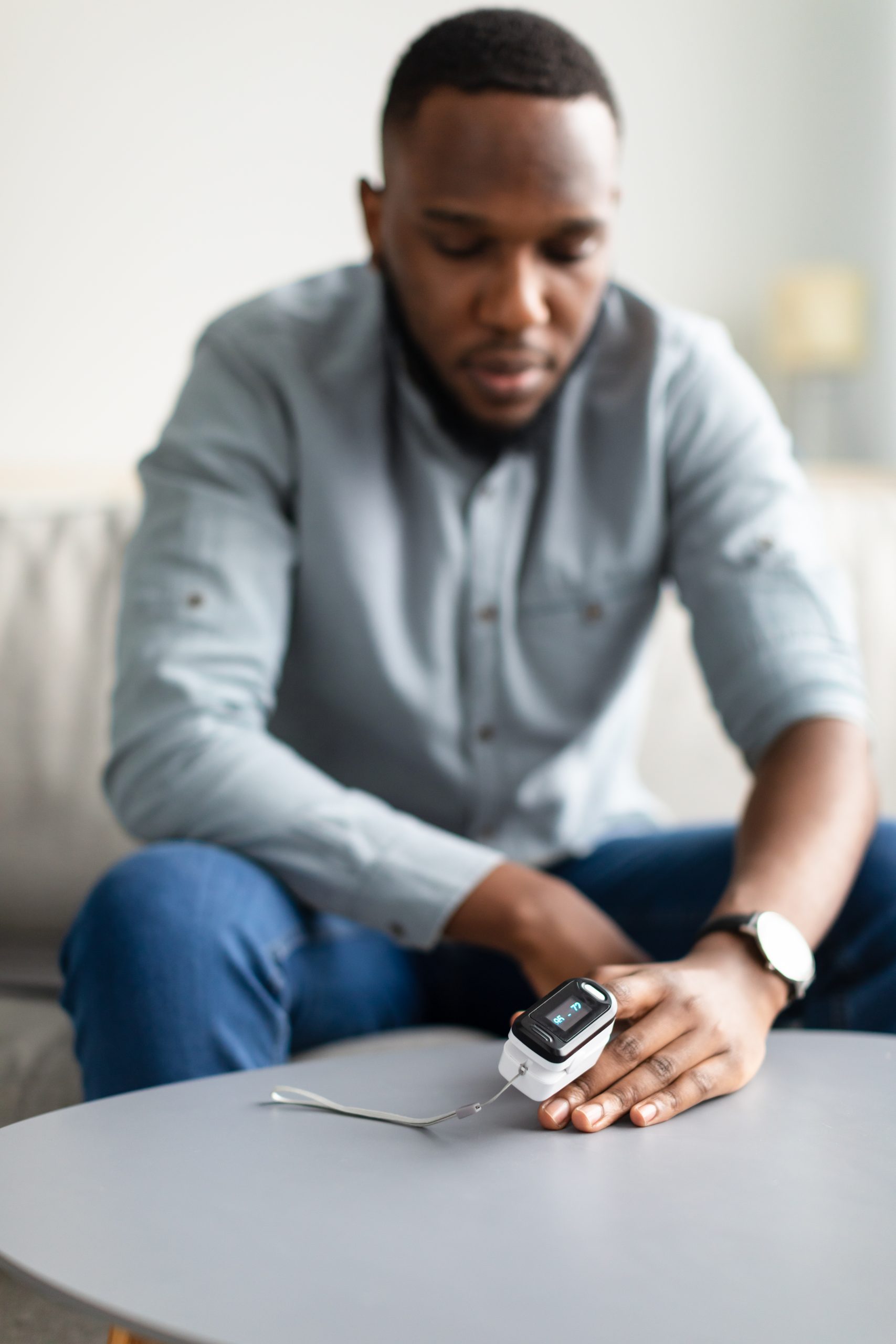
Over the counter pulse oximeters saw a surge in use during the pandemic. They are widely available, inexpensive, and easy to use. A panacea- or too good to be true?
What is a pulse oximeter and how does it work?
Pulse oximeters come as either a small unit with a built-in finger/toe clip, or as a small handheld device that has a wire probe with adhesive pads that can be applied to your finger, toe or earlobe.
“The pulse oximeter uses a cold light source that shines a light through the fingertip, making the tip appear to be red. By analyzing the light from the light source that passes through the finger, the device is able to determine the percentage of oxygen in the red blood cell.” Excerpt from the American Lung Association.
There are two categories of pulse oximeters: prescription use and over the counter (OTC).
According to the FDA “Prescription oximeters are reviewed by the FDA, receive 510(k) clearance, and are available only with a prescription. The FDA requires that these pulse oximeters undergo clinical testing to confirm their accuracy. They are most often used in hospitals and doctors’ offices, although they may sometimes be prescribed for home use.
Over-the-counter (OTC) oximeters are sold directly to consumers in stores or online and include smart phone apps developed for the purpose of estimating oxygen saturation. Use of OTC oximeters has increased as a result of the COVID-19 pandemic. These products are sold as either general wellness or sporting/aviation products that are not intended for medical purposes, so they do not undergo FDA review. OTC oximeters are not cleared by the FDA and should not be used for medical purposes.”

Limitations of OTC pulse oximeters
- A study done in November 2021 comparing white, black and Hispanic patients revealed the limitations of over the counter (OTC) pulse oximeters. Skin pigmentation plays a role in how accurate the pulse oximeters are. These devices work by absorbing light in hemoglobin, where oxygen is carried. However, darker pigmented individuals repeatedly had false high oxygen levels (3 times more than white individuals) because the light source from the oximeter can’t tell the difference between the hemoglobin and skin pigmentation. The darker the skin, the less accurate the reading. This prompted the FDA to review and issue a warning to the public on the use of these OTC devices.
- A program launched March 2020 by Penn University called “Covid Watch” to remotely monitor patients with COVID-19 who were well enough to stay home to recover found that questioning the patients on symptoms, such as shortness of breath or use of pulse oximeters did not change outcomes of patients’ recovery from Covid 19.
- Smokers read artificially high levels of oxygen -Instead of carrying oxygen on the red blood cells, which the pulse oximeter reads, carbon monoxide- from smoking, cooking over a grill or other forms of smoke- may be attached to the red blood cell receptors. The pulse oximeter cannot tell the difference between oxygen and carbon monoxide. This can produce a false high reading.
- Other factors can affect accuracy of OTC pulse oximeter such as poor circulation, nail polish on the finger being tested and even skin thickness.
The FDA advises the following:
- Do not rely only on a pulse oximeter to assess your health condition or oxygen level.
- If monitoring oxygen levels at home, pay attention to other signs or symptoms of low oxygen levels, such as:
- Bluish coloring in the face, lips, or nails;
- Shortness of breath, difficulty breathing, or a cough that gets worse;
- Restlessness and discomfort.
- Chest pain or tightness; and
- Fast or racing pulse rate.
- Be aware that some patients with low oxygen levels may not show any or all of these symptoms. Only a health care provider can diagnose a medical condition such as hypoxia (low oxygen levels).
Sometimes we rely too heavily on technology to assess and make healthcare decisions. This may be one of those cases. Use these OTC devices only under the supervision and care of your primary care provider. As stated above, physical assessment can tell just as much if not more than the popular OTC pulse oximeters. If you need to use one of these devices, ask for a prescription level device and receive proper instruction in its use.
- Brooke Lounsbury
Medical Content Writer
Lifesaving Medications
Recent Posts
Keeping you informed and safe.
FAQ: Our most commonly asked questions about Jase
If you’re considering Jase, chances are you’ve paused and thought, “This makes sense, but I still have a few questions.”You’re not alone. Here are the most common ones we hear, answered plainly. Is this really doctor-prescribed? Yes. Every Jase order is reviewed by a...
Medical Readiness: What Really Kills First
When Disaster Strikes, It’s Not Hunger or Thirst That Takes the First Lives In every disaster zone, from hurricanes in the Caribbean to war zones in Ukraine, the pattern is the same. People worry about food and water, but it’s infection that kills first. A small wound...
Exploring Dr. William Makis’ Hybrid Orthomolecular Cancer Protocol: Focus on Ivermectin and Mebendazole/Fenbendazole
Exploring Dr. William Makis’ Hybrid Orthomolecular Cancer Protocol: Focus on Ivermectin and Mebendazole/Fenbendazole *Disclaimer: This article is for educational purposes and does not constitute medical advice. Always seek professional guidance.* In the evolving...




